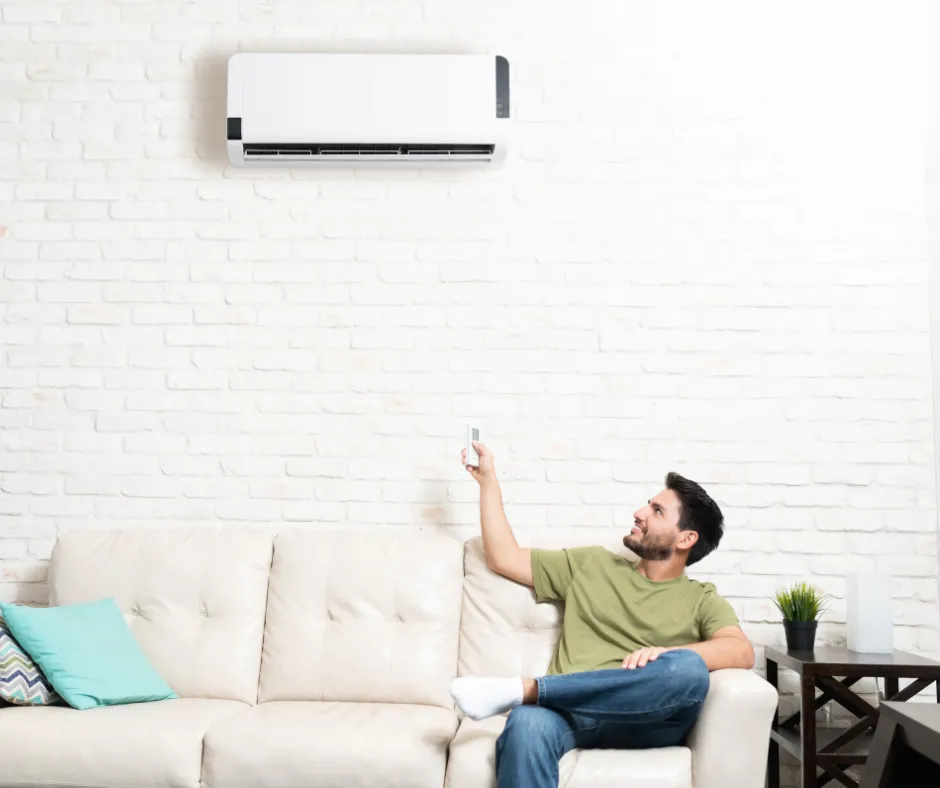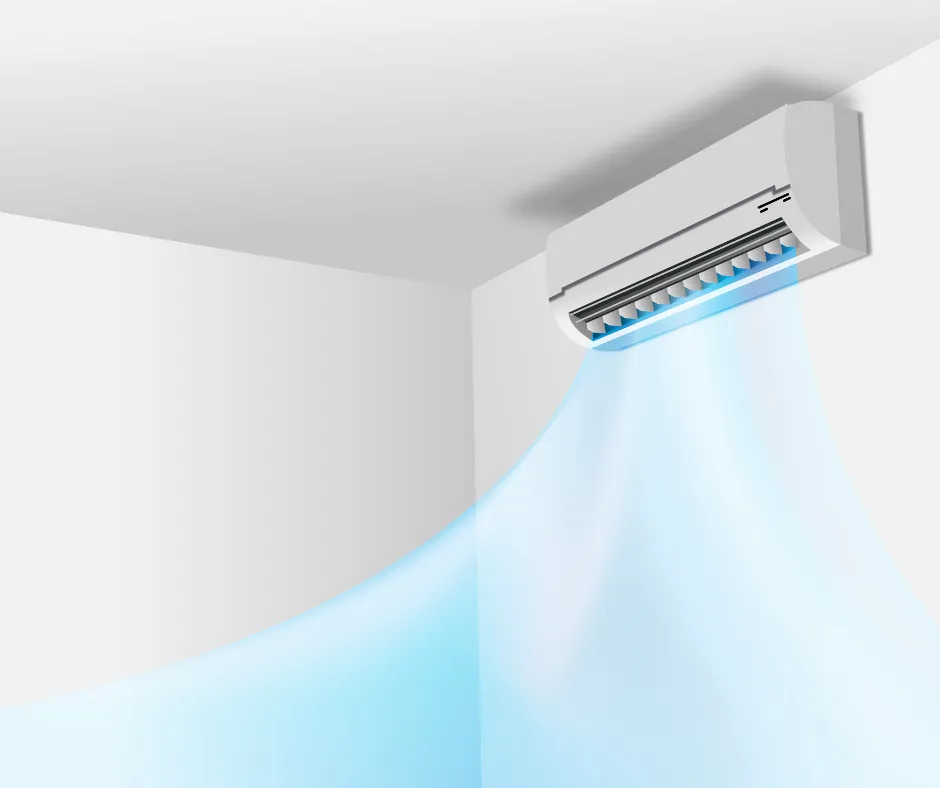Ductless mini-split AC systems are increasingly popular due to their energy efficiency and flexibility in installation.
In this article, we will explore the basic functionality and components of a ductless mini-split AC system, as well as the advantages and benefits that come with using this type of cooling system.
We will also provide important considerations to keep in mind when choosing a ductless mini-split AC system, including sizing and capacity, cost and installation factors, and maintenance and upkeep.
By the end of this article, you will have a better understanding of whether a ductless mini-split AC system is the right cooling system for your space.
Introduction to Ductless Mini-Split AC Systems
Ductless mini-split AC systems are becoming a popular choice thanks to their energy efficiency, versatility, and improved indoor air quality. These systems offer a fantastic alternative to traditional central air conditioning units and window units, providing homeowners with the ability to control the temperature in individual rooms with ease.

Definition and Basic Functionality
Ductless mini-split AC systems are made up of two main components: an indoor air handling unit and an outdoor compressor/condenser.
These two units are connected by refrigerant tubing, electrical wiring, and a condensate drain line. The system operates by transferring heat between the indoor and outdoor units, effectively cooling or heating the room as needed. This process is known as heat exchange, and it allows ductless mini-split systems to offer air conditioning and heating capabilities, making them ideal for year-round climate control.
It’s important to note that some mini-split systems offer both heating and cooling capabilities, while other models provide cooling only, so you’ll want to be mindful of both options when comparing systems.
Key Components of the System
- Indoor Air Handling Unit: This unit is responsible for circulating conditioned air within the room. It consists of a fan coil, air filter, and evaporator coil, and it can be mounted on the wall, ceiling, or floor, depending on the design and the homeowner’s preferences.
- Outdoor Compressor/Condenser: This unit is responsible for releasing and absorbing heat during the heat exchange process. It contains a compressor, condenser coil, and fan, which work together to transfer heat between the indoor and outdoor units efficiently.
- Refrigerant Tubing: This tubing connects the indoor and outdoor units, allowing the refrigerant to circulate between them. The refrigerant absorbs heat from the indoor unit and releases it through the outdoor unit. The tubing needs to be well-insulated to ensure energy efficiency and optimal performance.
- Electrical Wiring and Condensate Drain Line: These components connect the indoor and outdoor units, providing power to the system and allowing the condensate to drain from the indoor unit to the outdoors.
Advantages and Benefits
Ductless mini-split AC systems have many advantages and benefits over traditional HVAC systems, making them an attractive option for many homeowners. Some of the main advantages include energy efficiency, versatility and flexibility in installation, and improved indoor air quality.
Energy Efficiency
One of the main advantages of ductless mini-split AC systems is their energy efficiency. Due to the absence of ductwork, these systems do not suffer from the energy loss associated with traditional ducted systems. According to the U.S. Department of Energy, duct losses can account for up to 30% of energy consumption in a typical home. By eliminating ductwork, ductless systems can save homeowners a considerable amount on their energy bills.

Additionally, the variable speed compressors in ductless mini-split systems allow them to operate at a more energy-efficient level compared to traditional systems. These compressors adjust their speed based on the cooling or heating demand, resulting in less energy consumption and lower utility bills.
Versatility and Flexibility in Installation
Ductless mini-split AC systems are remarkably versatile and flexible for installation. The indoor air handling units can be installed on walls, ceilings, or floors, providing homeowners with multiple options for placement. This means you can choose the most suitable location for the unit based on factors such as aesthetics, airflow, and room layout.
Additionally, the absence of ductwork means that these systems can be installed in homes with limited space or unique architectural features, and they can be retrofitted into older homes without the need for major renovations. Ductless systems are also ideal for home additions or converted spaces, as they allow for targeted climate control without the need to extend existing ductwork.

Improved Indoor Air Quality
Ductless mini-split AC systems can improve indoor air quality in a few ways. First, the absence of ductwork eliminates the buildup of dust, allergens, and other pollutants that can accumulate in traditional ducted systems. This means that your home’s air will be cleaner and healthier, with fewer airborne contaminants circulating throughout the space.
Second, many ductless systems feature advanced filtration systems that can capture and remove airborne pollutants such as pollen, dust mites, and pet dander. This ensures that the air circulated throughout your home is clean and free of allergens, providing a healthier living environment for you and your family.
In summary, ductless mini-split AC systems offer a range of advantages over traditional HVAC systems, making them a compelling option for homeowners looking for energy-efficient, flexible, and cleaner cooling solutions. If you’re considering upgrading your home’s climate control system or enhancing comfort in certain rooms/areas of your home, it’s worth exploring the benefits a ductless mini-split system can provide.
Important Considerations When Choosing a Ductless Mini-Split AC System
When it comes to finding the perfect cooling solution for your home, a ductless mini-split AC system could be the best option. With increased energy efficiency and the ability to target specific areas with individualized temperatures, these units offer convenience and cost savings. Here, we discuss the factors to consider when choosing a ductless mini-split AC system.
Sizing and Capacity
The first step when selecting a ductless mini-split AC system is to ensure the unit is appropriately sized for your space. This means considering both cooling capacity and the number of indoor air handlers required.
In general, for smaller rooms such as bedrooms and offices, a single-zone system with a cooling capacity of around 9,000 to 12,000 British Thermal Units (BTUs) can be sufficient. For larger spaces like living rooms, multi-zone systems with higher BTUs are recommended. However, remember that more insulated spaces may require fewer BTUs to cool effectively, while less insulated spaces will require more.
When estimating the number of indoor air handlers needed, consider that each handler can cover roughly between 350 to 500 square feet, depending on the system’s capacity. A higher-capacity system can support fewer indoor units, while a lower capacity will require more. It’s best to consult a professional HVAC technician to determine what sizing and capacity you need from your mini-split system.
Cost and Installation Factors
Ductless mini-split AC systems can be more expensive upfront than traditional window units. Still, their energy efficiency and lower operating costs can make them a more cost-effective solution in the long run.
Installation costs can vary greatly, depending on factors like labor rates, system complexity, and the need for electrical upgrades. Additionally, several factors can make the installation more challenging and expensive, such as mounting on brick or concrete walls, hard-to-reach installation sites, and working around obstacles like pipes and wiring. Investing in a professional installation is crucial; improper installation can lead to problems with system performance, maintenance, and energy efficiency down the line.
Maintenance and Upkeep
Ductless mini-split AC systems generally require less maintenance than traditional HVAC systems, but regular upkeep is essential for prolonging the lifespan of the unit and ensuring optimal performance. Here are some key maintenance tasks:
- Cleaning or replacing air filters every few months or as recommended by the manufacturer.
- Checking for debris, dirt, or obstructions in both indoor and outdoor units.
- Ensuring that the outdoor unit has proper clearance and is free from vegetation or other obstructions that may impede airflow.
- Periodically checking refrigerant levels and temperature to ensure optimal cooling performance.
- Regularly inspecting and cleaning the condensate drain line to avoid clogs and water damage.
Enlisting professional service for a regular inspection of your ductless mini-split system can also be beneficial, as it allows for expert assessment and proactive resolution of potential issues.
Ideal Situations for Ductless Mini-Split AC Systems
Ductless mini-split AC systems are particularly advantageous in certain situations, such as:
- Spaces with little/no existing ductwork, like additions, garages, or sun rooms.
- In rooms with uneven temperatures or hot spots, such as an upstairs master bedroom, where zoning can effectively target specific cooling needs.
- Smaller spaces, where energy efficiency and savings can be maximized.
- Homes with multiple occupants, where individual temperature preferences can be accommodated.

Understanding the unique qualities of your space will help determine if a ductless mini-split AC system is the best option for your cooling needs.
Making an Informed Decision on the Right Cooling System for Your Space
Weighing each of these factors and seeking expert advice are crucial steps in selecting the perfect ductless mini-split AC system.
To get the best value from your AC system, count on the professionals at Logan AC & Heat Services. We’ve served Ohio residents since 1969 with outstanding customer service and HVAC installation and maintenance. From the initial quoting process through the completed job, we are here to answer your questions and help you make the best decision for your space. Contact us today to get started.
FAQs Ductless Mini-Split AC System
How long do ductless mini-split AC systems last?
With proper maintenance, ductless mini-split systems can last up to 20 years, though some components may need replacement earlier, such as the compressor or outdoor unit.
Can a ductless mini-split system provide both heating and cooling?
Yes, many ductless mini-split systems include both cooling and heating capabilities. These are often referred to as “heat pump” mini splits, and they can provide year-round comfort and convenience.
How often should I clean the air filters in my ductless mini-split AC system?
The frequency of cleaning or replacing air filters will depend on factors like system usage, the number of occupants, and whether you have pets. Generally, cleaning filters every 2-3 months is recommended, though some manufacturers might have their own guidelines.
What is the difference between single-zone and multi-zone ductless mini-split AC systems?
Single-zone systems consist of one indoor air handler and one outdoor unit, providing cooling to a single room or space. Multi-zone systems have multiple indoor air handlers connected to a single outdoor unit, allowing cooling for multiple rooms and individual temperature control in each zone.




















